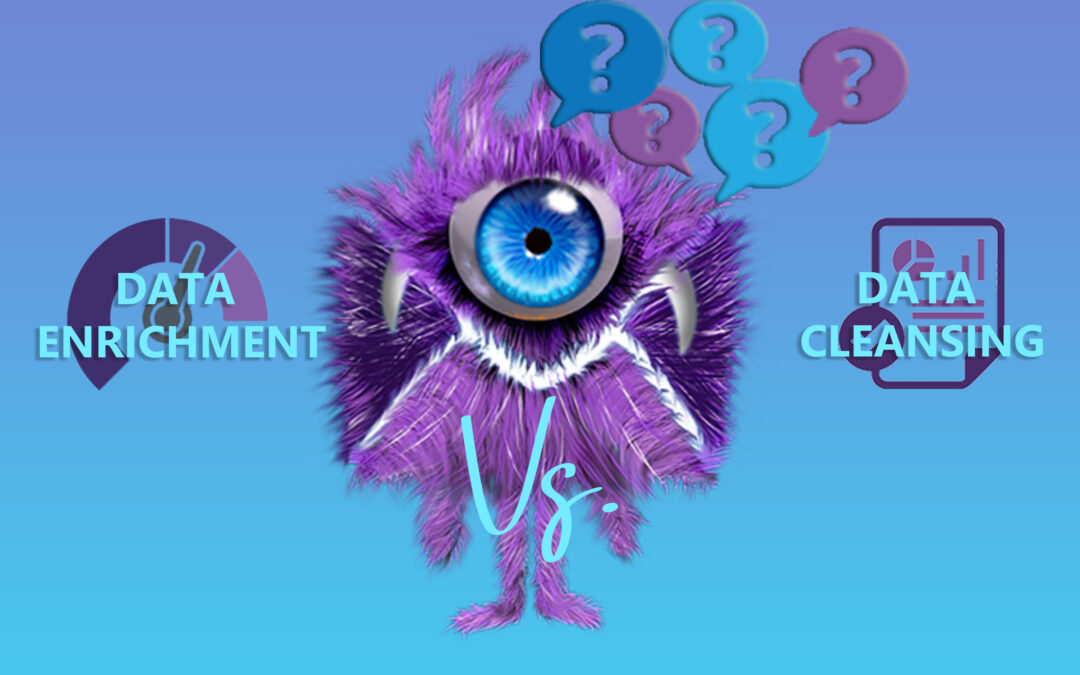In the B2B domain, data enrichment is one of the important elements of data hygiene. Data is considered to be the livelihood of the modern-day businesses and formulating customer service, marketing, and sales strategies is not possible without data. Business leaders across the world use data to power their decision-making process and lead to the growth and profitability of their companies.
Data Cleansing is pretty self-explanatory. But then you throw in Data Enriching and the definitions of (and delineations amongst) these terms start to get significantly murkier. So what’s the difference between data cleansing vs. data enriching?
What Is Data Cleansing?
Also called data cleaning, this process ensures that data used by a business is trustworthy, accurate, and consistent. Simply put, it is the process of sifting through a mountain of data and fish out high-quality usable data about your customers’ behaviors, motivations, etc. Data cleaning involves resolving discrepancies, culling repetition, updating old records and discarding incorrect data.
What is Data Enrichment?
Data enrichment is the process of merging an available database of first-party client data with a third-party database taken from an external reliable source. An organization can make use of the enriched data which will be very useful and offer a lot of insights.
Data enrichment has already been used by several leading brands to make informed decisions by enriching their raw data. For businesses, their raw customer data includes website traffic, email lists, social media analytics, etc. This data in its raw form will be largely useless. If it is cleaned, structured and mixed with external authoritative data, it can become useful and offer a lot of insights. The overall process makes the raw data more relevant by giving it a valuable shape.
- Cost savings
Data enrichment helps businesses save money because the information that is not considered useful is not stored. Rather, the existing data is enriched after combining it with the external authoritative data. There would be no spending on databases and that money can be used in other activities. - Meaningful relationships
When the existing data is enriched with external data, it leads to personalized communications which are very vital. It will further increase the scope of meaningful customer relationships and business opportunities. Developing channels and strategies of communication that will meet the customer needs will become a lot easier with the relevant customer data. Customers are more likely to relate to the brands that meet their personal tastes and preferences. - Customer segmentation
Data enrichment leads to the possibility of identifying segments of target customers and designing personalized communication for them. Targeted communication gives value-driven information that will most likely lead to increased sales and customer loyalty. - Targeted marketing
If businesses want to be successful now and in the future, they must resort to targeted marketing. One-size-fits-all marketing approach no longer works, especially in this age of increased competition. Data enrichment helps segment the data effectively which is vital for the success of targeted marketing. - Improved sales
Data enrichment gives effective information regarding that can help businesses improve their sales efficiency and their return on investments (ROI). There is a further chance for upselling and cross-selling as the business would already have the right data and knowledge of customers. If a business invests a huge amount into a contact list to turn that into prospects and subsequent customers, but it could also happen that the data has become outdated. Businesses cannot afford such losses. - Eliminate irrelevant data
Irrelevant and redundant data can cost a business drastically and lead to customer loss, revenue loss and bring a bad reputation. Redundant data is very common for businesses because they are not sure of what data to store and what to delete. Another problematic element is the duplicated data which is very common in raw data and affects the overall data quality. Data enrichment helps to eliminate duplicate data and improves data quality. - Improves customer experience
As we move deep into data enrichment, it is also important to understand what data cleansing means as there are many who get confused between the two.
So, that’s the difference!
The process of data cleansing or data cleaning involves making the data consistent, correct and trustworthy. It is basically filtering a large amount of available data to identify quality and usable insights about the motivations and behaviors of customers. The major difference between data enrichment and data cleansing is that the latter involves solving inconsistencies and updating or deleting old or incorrect data. Meanwhile, data enrichment, as already seen above, is supplementing one dataset with data from other credible sources.
For example, if you want to start a data project, you can start by cleaning the existing data to remove all the irrelevant information. You might further want to add some credible data by using third-party data. Data cleansing will help you to identify duplicate, corrupt or inaccurate records from your customer database. It can be very time-consuming if the process is not automated.
In a nutshell, data cleansing is identifying whether your data is still valid and correct whereas data enrichment, also called data appending, involves the process of fortifying and adding more information to the pre-existing database to give it more meaning which can make it even more useful. On MailMonster we help you do both processes, so you can clean your bulk list and do Data enrichment of your list with our tool.
No matter what the business is, the sales teams are finding their work becoming incredibly data-driven. It is not difficult to get the data that is required to improve the sales output. The key here is to ensure that you have access to the right information at the right time. To bridge this gap, data enrichment comes into play.

